After-Hours Tour of the Fraunces Tavern Museum: "Path to Liberty"
Explore a new exhibit inside the oldest building in Manhattan, a witness to history throughout the Revolutionary War Era!


Tucked away quietly in a beautiful yet unassuming block of the Upper East Side, delicate signage and a vibrant red door designate a vital, yet often overlooked, cultural institution. The building that houses the Society of Illustrators and the Museum of American Illustration blends in seamlessly with its surroundings, acting almost as a metaphor for the nature of the artworks inside. We encounter hundreds of wonderful (and, admittedly, some not-so-wonderful) images every day, yet the way they have been incorporated into our environments and the tools with which we run our lives makes them easy to overlook. Even within the art world, illustrators are often not regarded with the same respect as gallery or ‘fine’ artists, despite how perfectly executed or deeply inspired a piece may be.
But it is this quiet disposition that makes illustration so fascinating and relevant. Often narrative and always representational, illustration gives us a visual lexicon that is ever-changing and true to the times. Like all art, it reflects a culture and a moment, and when paired with good design, these pieces are able to become completely integrated into our daily lives. New York is very fortunate to have a space and wonderful team of people that is so dedicated to preserving and celebrating this history.
Founded on February 1st, 1901, the Society of Illustrators began with a very simple credo: “The object of the Society shall be to promote generally the art of illustration and to hold exhibitions from time to time.” This simple vision seems to have been beneficial, as the institution has remained true to itself for over a century.
In a modern context, the Society acts as a gathering place for industry folks and fans, celebrating the best in contemporary illustration through various gallery and award shows. Scholarships are given to students (they also hold an impressive show annually), there is a weekly sketch and jazz night, one can regularly attend lectures and screenings, and the bar and dining room upstairs, complete with an impressive original Rockwell, is surely one of the most elegant in the city.
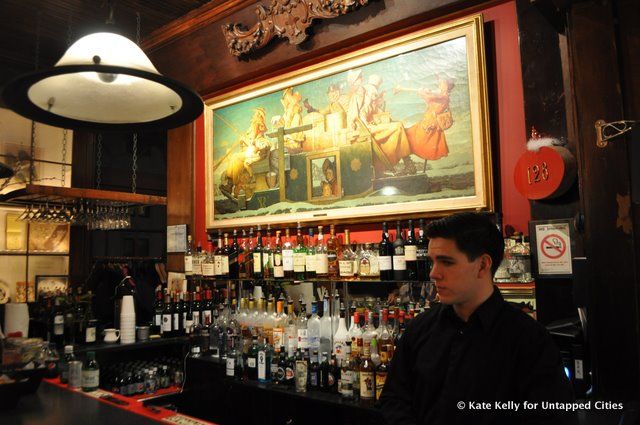
In addition to being the most important institution for the industry of Illustration, it is also an educational powerhouse with a collection that boasts 1,800 original works. All the greats are here, from N.C. Wyeth to Maxfield Parish, and the imagery is vast. Fashion, editorial, science fiction, children’s books–whatever the genre or market, it has a home here, and staff members are diligent about rotating displayed works frequently.
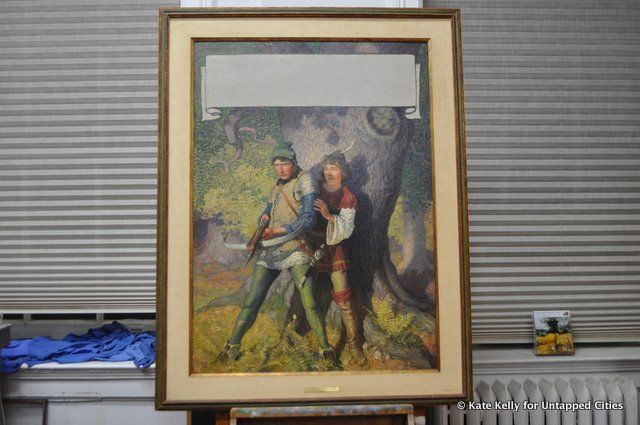 Newell Convers Wyeth, 1882-1945. “The Black Arrow,” illustration for the cover of Robert Louis Stevenson’s “The Black Arrow,” published by Charles Scribner’s & Sons, Doubleday, 1926. Oil paint on canvas.
Newell Convers Wyeth, 1882-1945. “The Black Arrow,” illustration for the cover of Robert Louis Stevenson’s “The Black Arrow,” published by Charles Scribner’s & Sons, Doubleday, 1926. Oil paint on canvas.
After years of taking in and enjoying the public galleries at the Society, I became increasingly curious about the 1,700 other pieces that I was not seeing at any given time. The building, a stunning 5-story townhouse, only opens 3 of its floors to the public, concealing a library, office, and veritable ‘warehouse’ of some of the most beautiful works that have been created in the United States. I had to get up there.
Perhaps one of the most impressive aspects of this institution is recognizing how small it ultimately is. It is humbling to be inside a smaller space while being surrounded by such a wealth of awe-inspiring and valuable work. The walls are loaded with framed originals, and you feel practically dwarfed by the pieces as they tower over you.
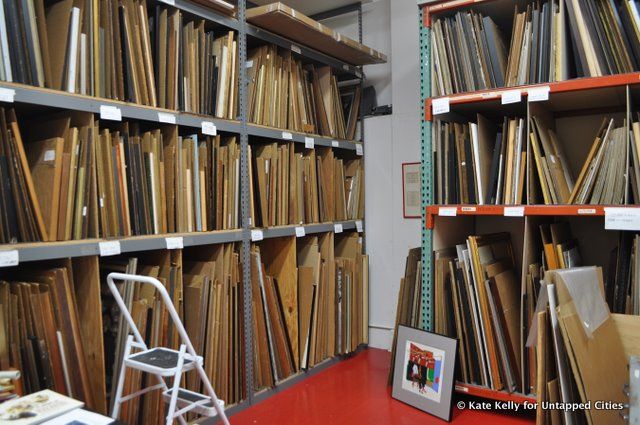
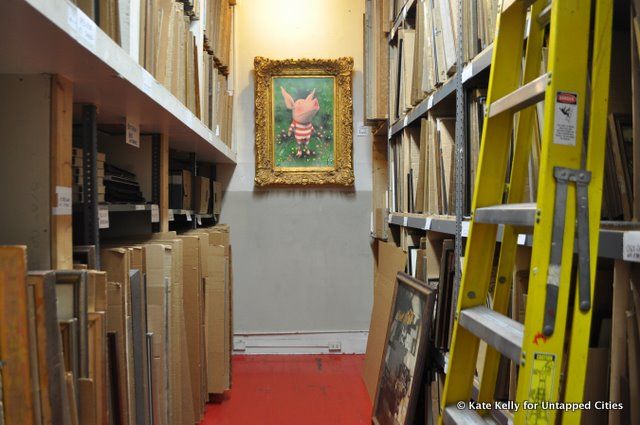 Ian Falconer (b. 1959), “Olivia in the Spring.” Oil paint on canvas.
Ian Falconer (b. 1959), “Olivia in the Spring.” Oil paint on canvas.
Again, I can’t articulate the quality and diversity of work here. Every piece that was pulled down for me to view was a bona fide showstopper.
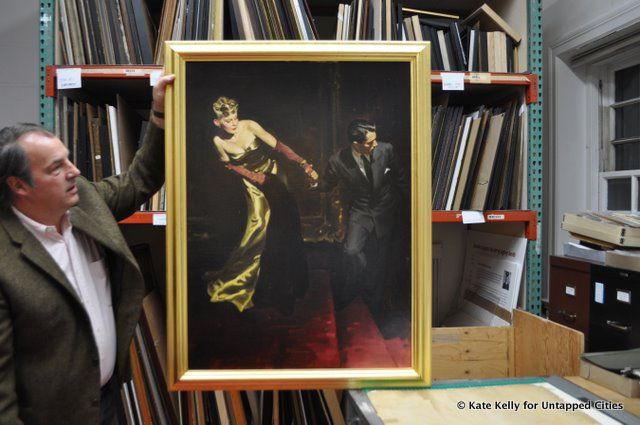 Mortimer Wilson, Jr. (1906-1996). “The Temptress,” title illustration for the story by Ann Pinchot. “The American Magazine”, circa 1945. Oil paint on linen.
Mortimer Wilson, Jr. (1906-1996). “The Temptress,” title illustration for the story by Ann Pinchot. “The American Magazine”, circa 1945. Oil paint on linen.
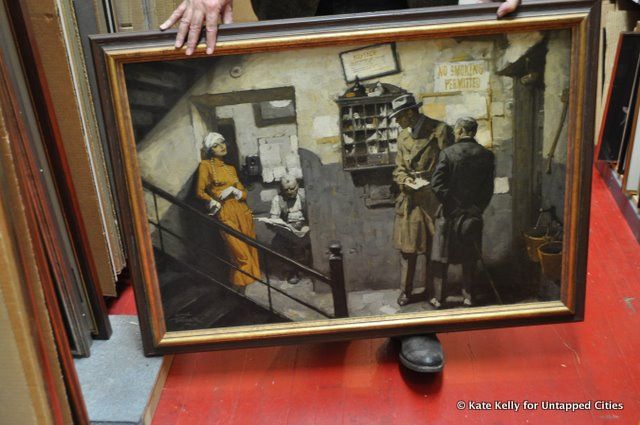 Saul Tepper (1899-1987). “Stage Door Schubert Theater,” illustration for the story “Star Magic” by Channing Pollock. “The American Magazine,” September 1933. Oil paint on canvas.
Saul Tepper (1899-1987). “Stage Door Schubert Theater,” illustration for the story “Star Magic” by Channing Pollock. “The American Magazine,” September 1933. Oil paint on canvas.
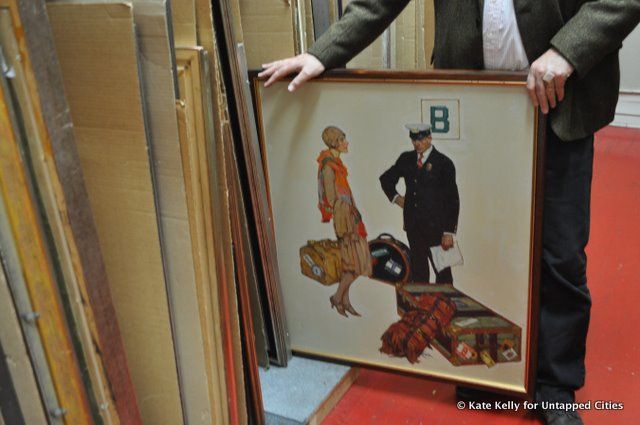 Saul Tepper (1899-1987), “Baggage Section ‘B.'” Painted for Liggett & Meyers Corporation, used as an advertisement for Chesterfield Cigarettes. Also appeared in “Cosmopolitan”, “Good Housekeeping”, “Collier’s”, “Liberty”, “The Pictorial Review“. July 1928, oil paint on canvas.
Saul Tepper (1899-1987), “Baggage Section ‘B.'” Painted for Liggett & Meyers Corporation, used as an advertisement for Chesterfield Cigarettes. Also appeared in “Cosmopolitan”, “Good Housekeeping”, “Collier’s”, “Liberty”, “The Pictorial Review“. July 1928, oil paint on canvas.
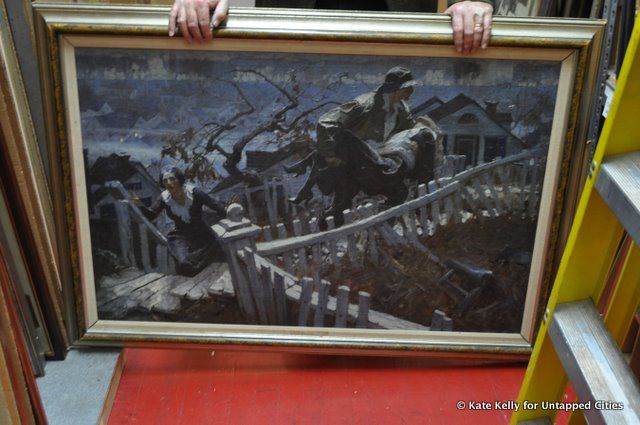 Dean Cornwell (1892-1960), “Gold Hands.” Illustration for a short story by Edith Barnard Delano. “Good Housekeeping magazine,” March 1924. Oil on board.
Dean Cornwell (1892-1960), “Gold Hands.” Illustration for a short story by Edith Barnard Delano. “Good Housekeeping magazine,” March 1924. Oil on board.
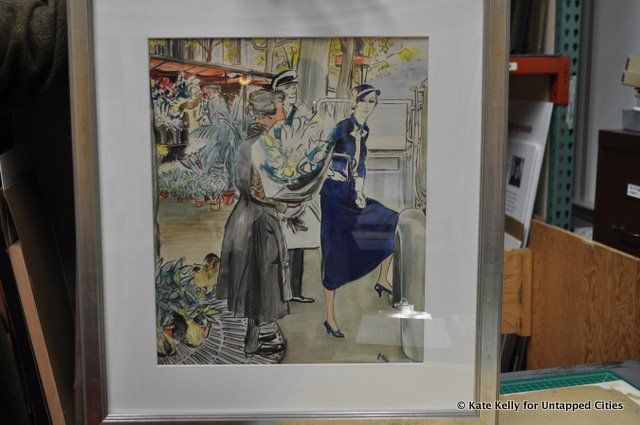 Carl Oscar August (Eric) Erickson (1891-1958). Watercolor on paper.
Carl Oscar August (Eric) Erickson (1891-1958). Watercolor on paper.
The office itself is an admirable space, clean and bright. A lot of amazing work happens here – from archiving the pieces in an ever-expanding database (including scans and photographs of the illustrations in their original context), to establishing which pieces will be displayed for the public. Not to mention all of the administrative tasks…
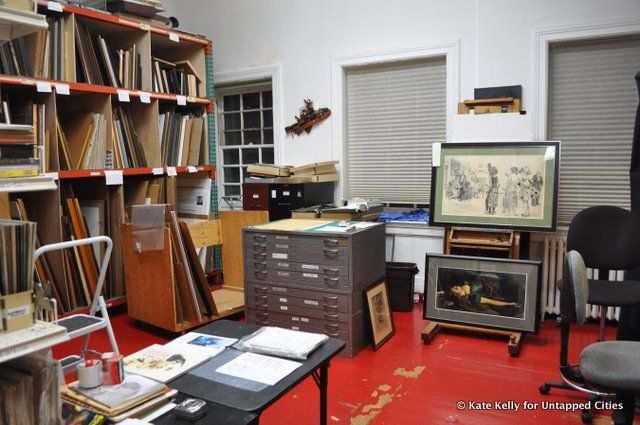
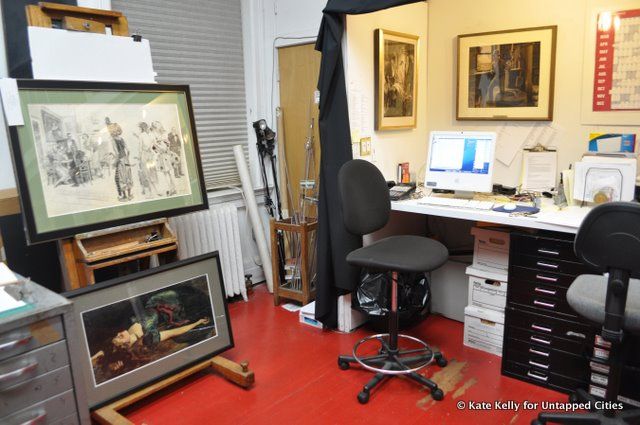
Of course, not all of the originals are able to have a home in a frame, as the volume would be monstrous. Many pieces are carefully wrapped and preserved in flat files throughout the office.
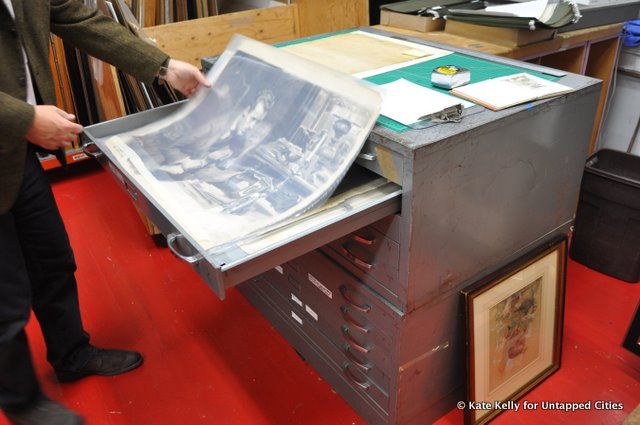 James Montgomery Flagg (1877-1960), “Pensive Gentleman.” “McCall’s Magazine.” Ink wash on board.
James Montgomery Flagg (1877-1960), “Pensive Gentleman.” “McCall’s Magazine.” Ink wash on board.
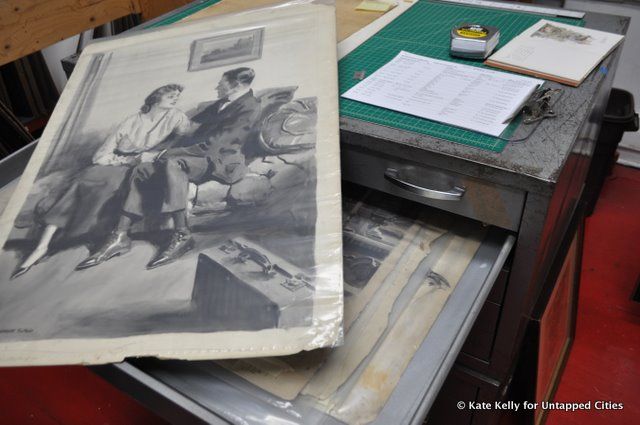 James Montgomery Flagg (1877-1960), “But What About the Money?” For “Scribner’s.” Date unknown, charcoal and wash on board.
James Montgomery Flagg (1877-1960), “But What About the Money?” For “Scribner’s.” Date unknown, charcoal and wash on board.
There is also a wonderful library, which houses an extensive collection of art books.
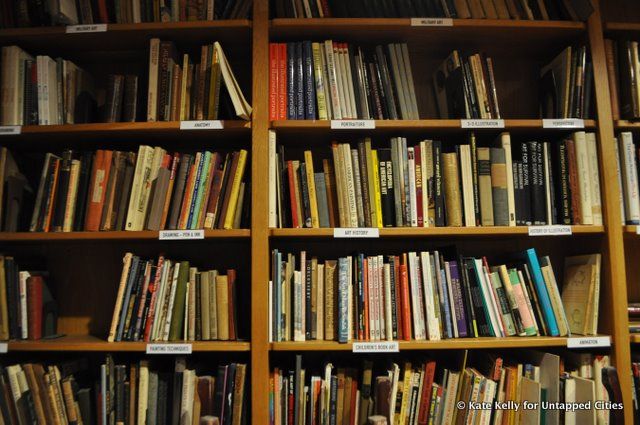
And is also home to these wonderful illustrated tiles, made by dozens of artists.
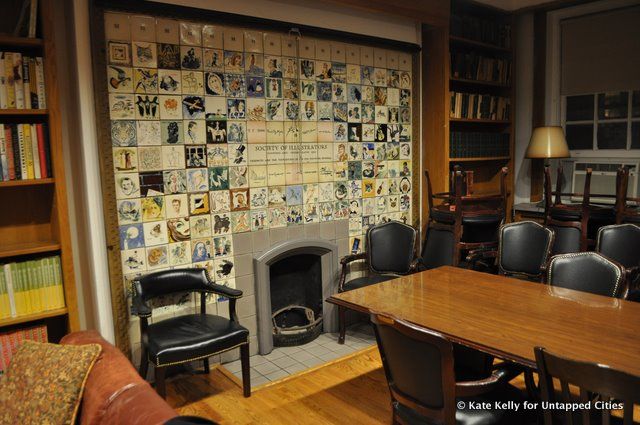
Of course, this post would be incomplete without paying homage to the various nooks and crannies filled with impeccable work.
More tiles! Society of Illustrators, 2nd floor
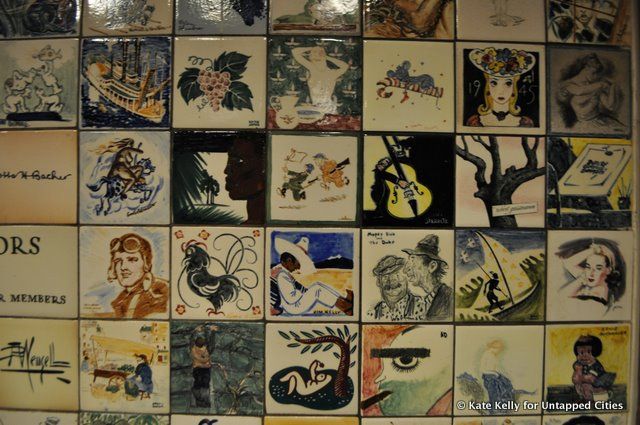
Society of Illustrators, 2 1/2 floor
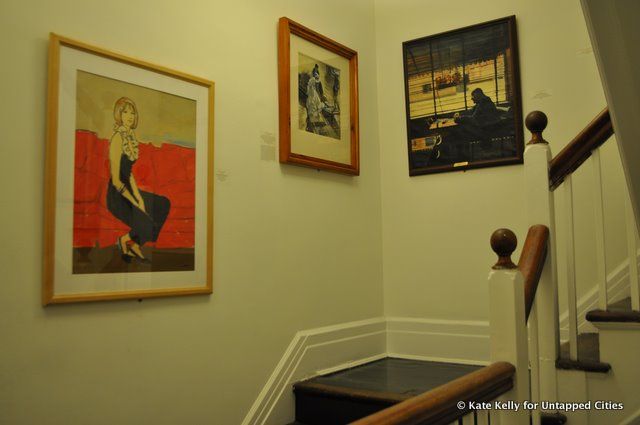
Society of Illustrators, 2nd floor
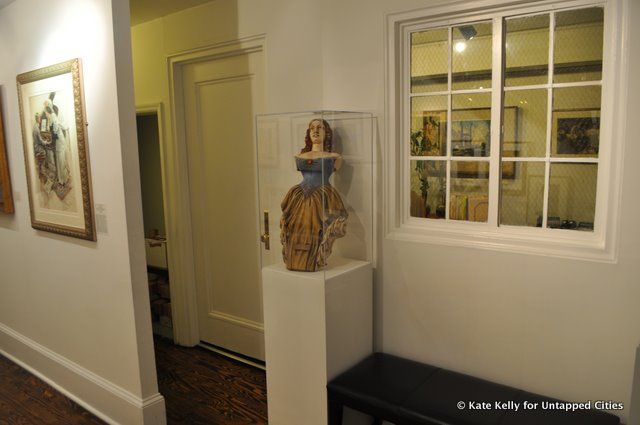
Society of Illustrators, 1st floor
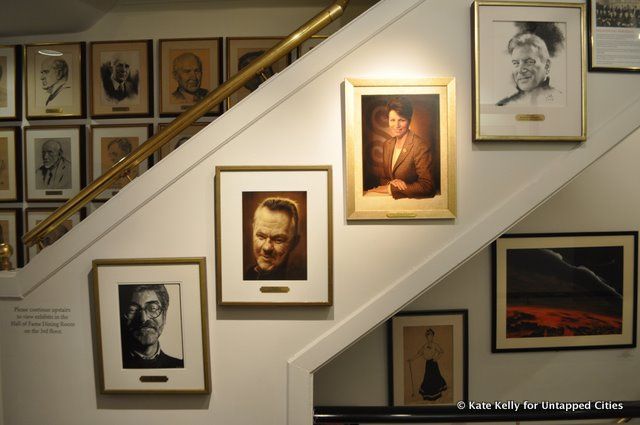
Aside from being awed after an evening spent surrounded by so many stunning originals, the most meaningful experience was getting a glimpse into how much these people care about the museum, the industry, the history and the art of illustration itself. It is no small task spearheading a movement to obtain recognition that is long-overdue for this art form, and to say that it is a labor of love would be an understatement. I would like to say a huge thank you to Richard Berenson and Eric Fowler for taking the time to speak with me, and especially to Katie Blocher for orchestrating my visit. I cannot applaud this place enough and strongly recommend taking a moment to appreciate this tremendous museum.
The Society has a long and fascinating history both as a building and an institution. Learn more on their website, or stop by and say hello from 10am-8pm Tuesday, 10 am-5pm Wednesday-Friday, and 12pm-4pm Sunday.
Get in touch with the author @mllefauxfrench.
Subscribe to our newsletter